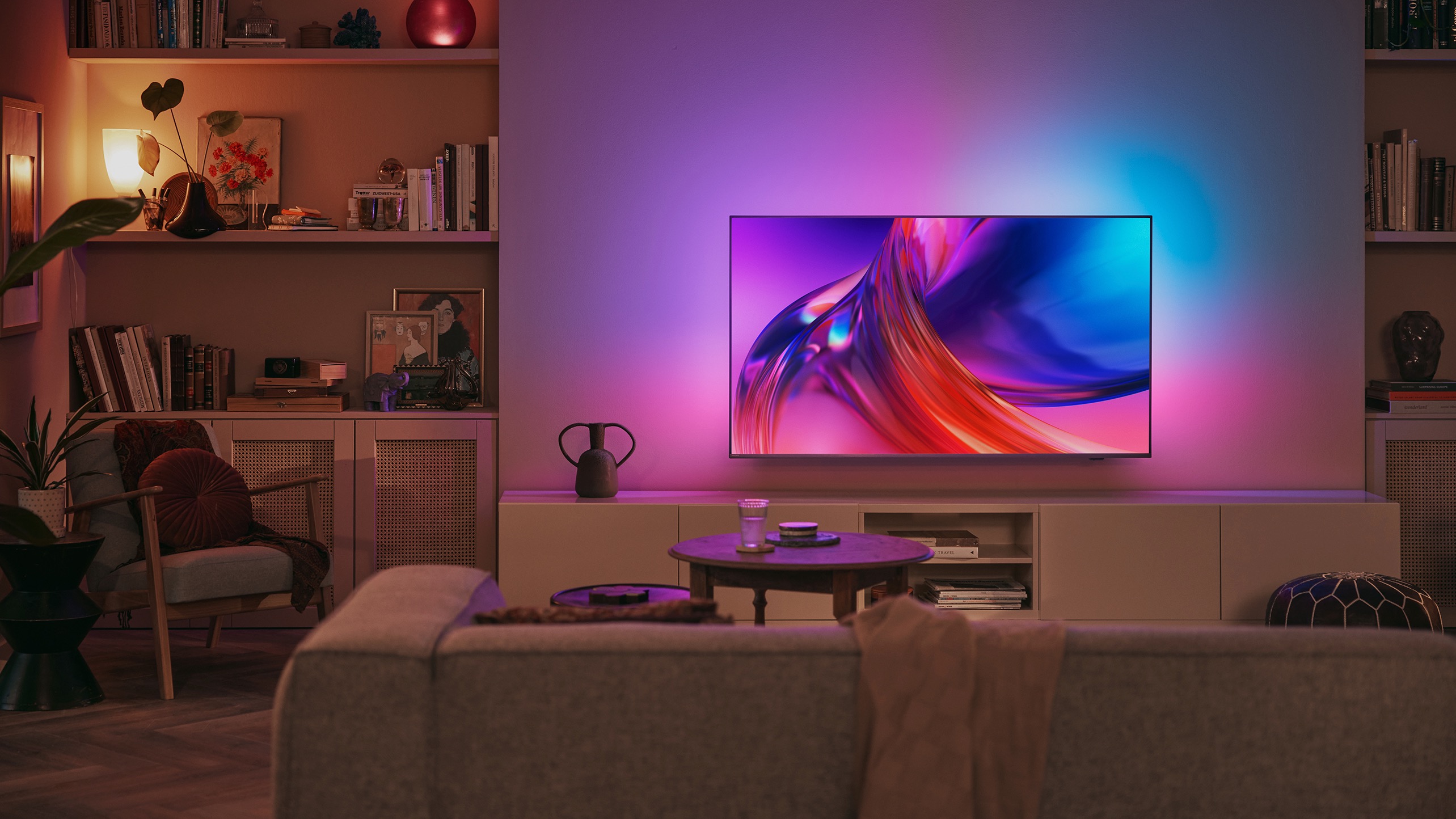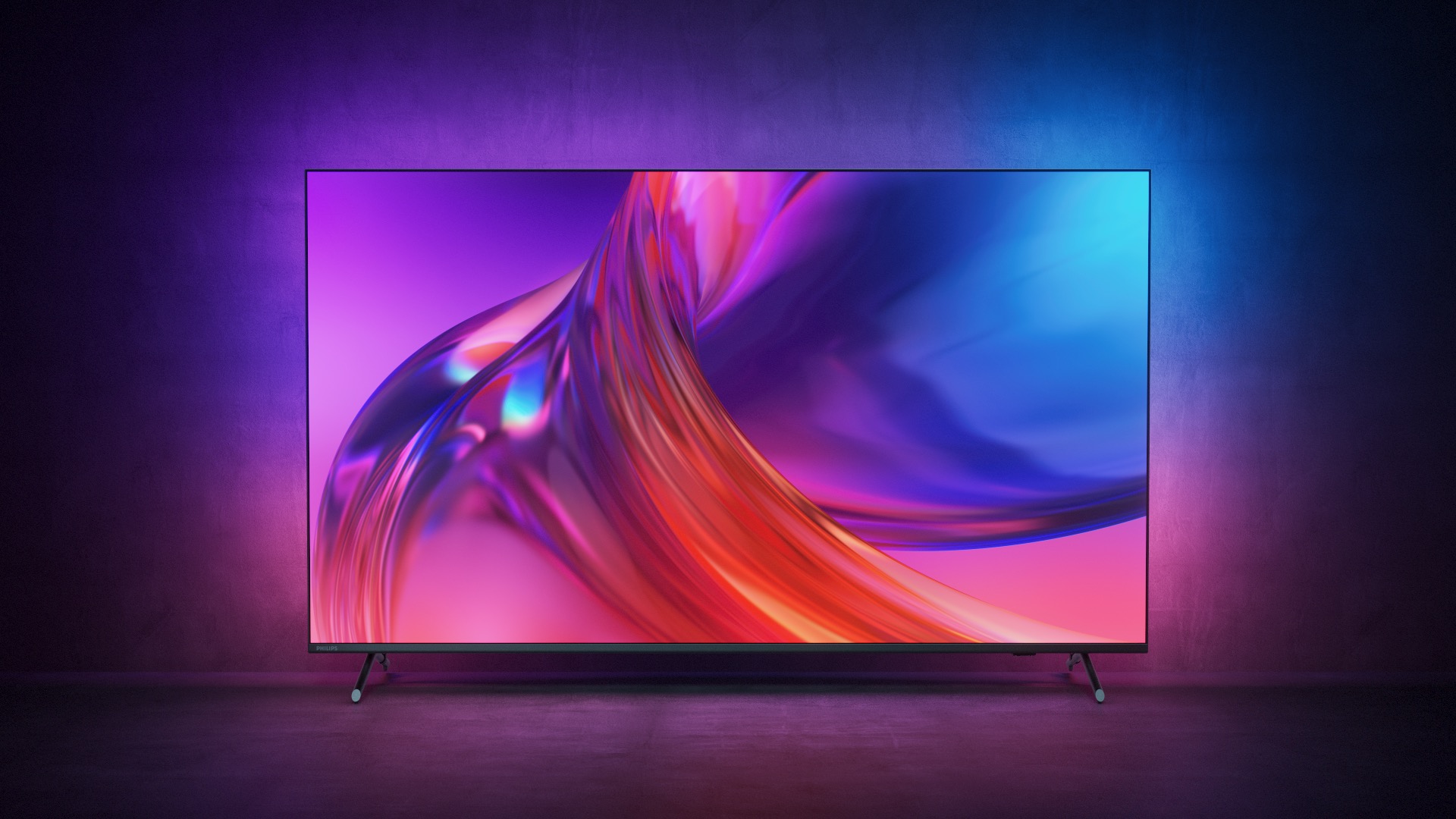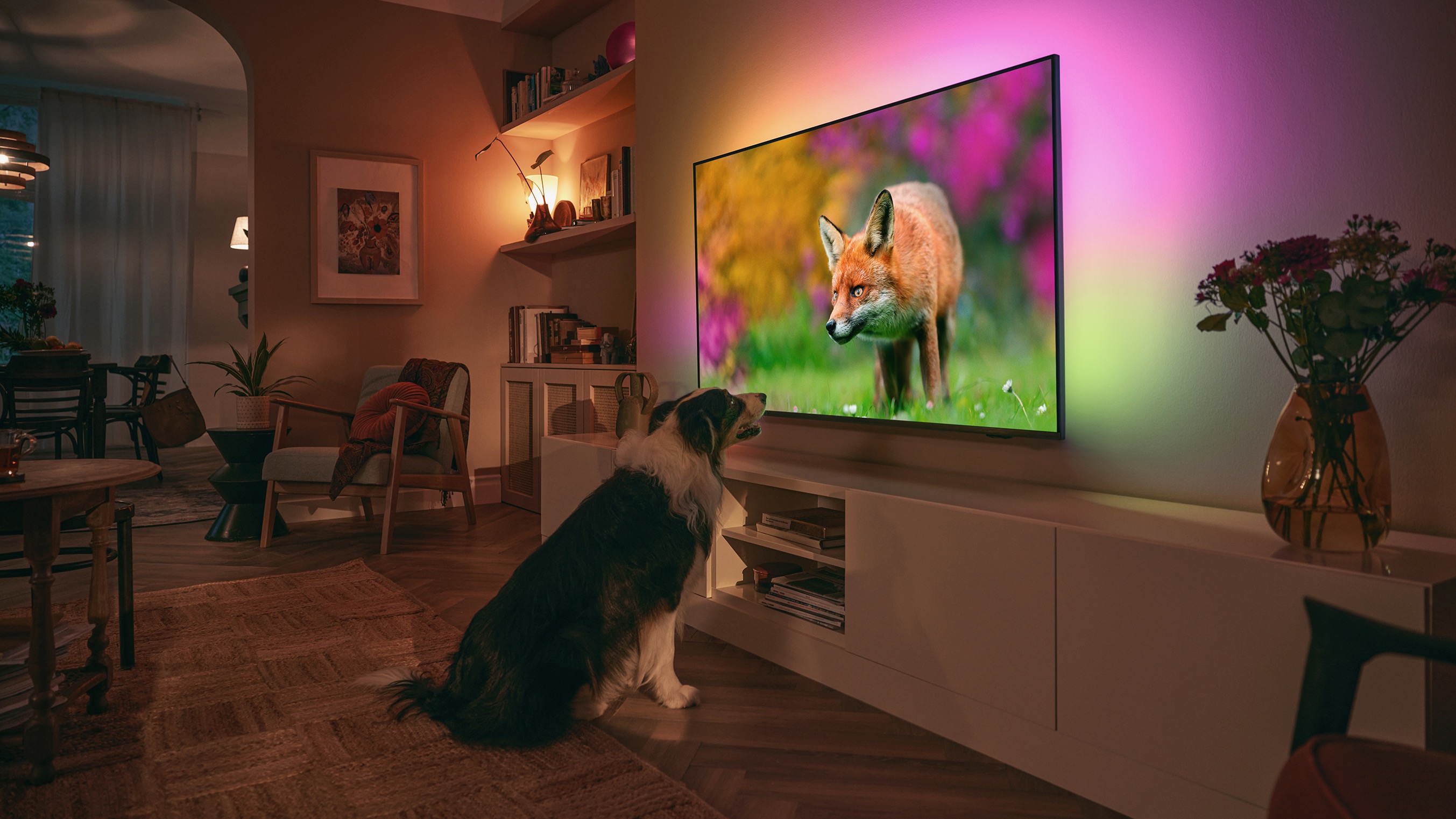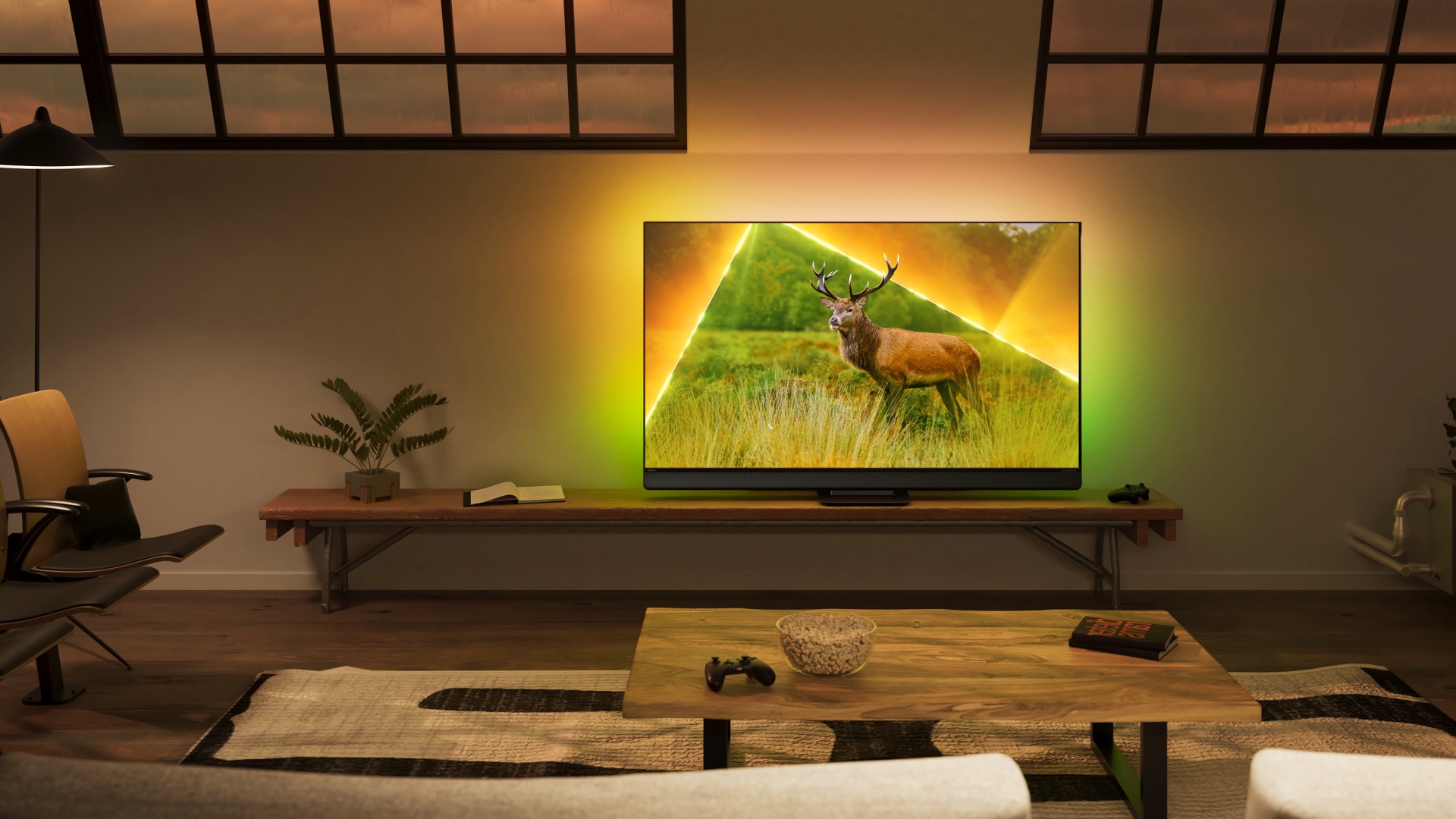How Philips Ambilight levels-up your TV-watching experience
Let there be Ambilight

Have you ever tried a Philips Ambilight TV? If not, here’s why we think you should. Philips Ambilight makes any kind of content, from movies to football matches and even gaming, more immersive and engaging. Once you’ve tried Philips Ambilight there’s a very good chance, you’ll never own TV without it. So what does it do, exactly?
LEDs built into the back of a Philips Ambilight TV extend on-screen content by projecting colour-matched light onto the wall or surface behind. It helps reduce eyestrain and makes the TV image appear deeper and richer through a perceived increase in contrast.
It also appears as though the image is floating in space, not just stuck in the confines of your TV’s panel. Philips Ambilight is a not-so-little piece of TV tech magic you need to experience for yourself at the first possible opportunity.
What can Philips Ambilight do?

There’s more good news. Philips Ambilight is available in all sorts of TVs, not just high-end ones.
You’ll find Ambilight in everything from affordable 43-inch LCD sets to ultra-desirable OLEDs like the 5-star reviewed Philips OLED907, and the company’s brand new MiniLED TVs.
It works wonders for movies, but also pairs beautifully with football matches and video games. And even TV soaps — why not? Your room becomes part of the presentation, drawing your eyes in like a tractor beam.
Philips Ambilight can also be used when the TV is not playing shows or movies.
It can react to music, act as another light source for the room and help you wind down before bed by warming up the colour temperature as it gets late in the day, a sunset-like effect.
There’s even a lava lamp-style animated mode, to add visual interest to any space without having the TV fully turned on. Philips Ambilight doesn’t just enhance TV viewing, it makes your TV flat-out more useful in ways you might never guess.
Creating the legend

Some of you may already know the basic Philips Ambilight concept. However, this technology has done anything but stand still since it was first introduced in 2004.
It went through a generational change in 2022, one that dramatically improved Philips Ambilight real-world impact and fidelity. What was great is now, well, even better.
Instead of using blocks or “zones” of multi-colour LEDs, this next-gen Ambilight has individually controllable LEDs.
Far greater control means far greater accuracy, making Ambilight projection appear to merge with the on-screen content all the more convincingly. The movie being played and the room it’s played in appear to merge, letting you get lost in the narrative all the more completely.
Philips Ambilight: A potted history

Getting to this level has involved many stages of iterative improvement.
In the earliest versions of Philips Ambilight, there were light panels on the left and right of the screen, and they would both display whatever was the dominant colour on-screen.
This soon transitioned into Ambilight that could display different colours on the left and right sides. Over the years, Philips added upward-firing LEDs, for “three-sided” Ambilight and zones for greater control of the projected light.
However, the 2022 update represents a sea change in what’s possible with a Philips Ambilight set.
One part has always remained, though. Phillips Ambilight is a feature best experienced first-hand. We’ve hopefully given you a taster of what it’s like to witness Ambilight in action. But before you choose your next TV, make sure to audition a Philips Ambilight TV in person.
Get the What Hi-Fi? Newsletter
The latest hi-fi, home cinema and tech news, reviews, buying advice and deals, direct to your inbox.
What Hi-Fi?, founded in 1976, is the world's leading independent guide to buying and owning hi-fi and home entertainment products. Our comprehensive tests help you buy the very best for your money, with our advice sections giving you step-by-step information on how to get even more from your music and movies. Everything is tested by our dedicated team of in-house reviewers in our custom-built test rooms in London, Reading and Bath. Our coveted five-star rating and Awards are recognised all over the world as the ultimate seal of approval, so you can buy with absolute confidence.

